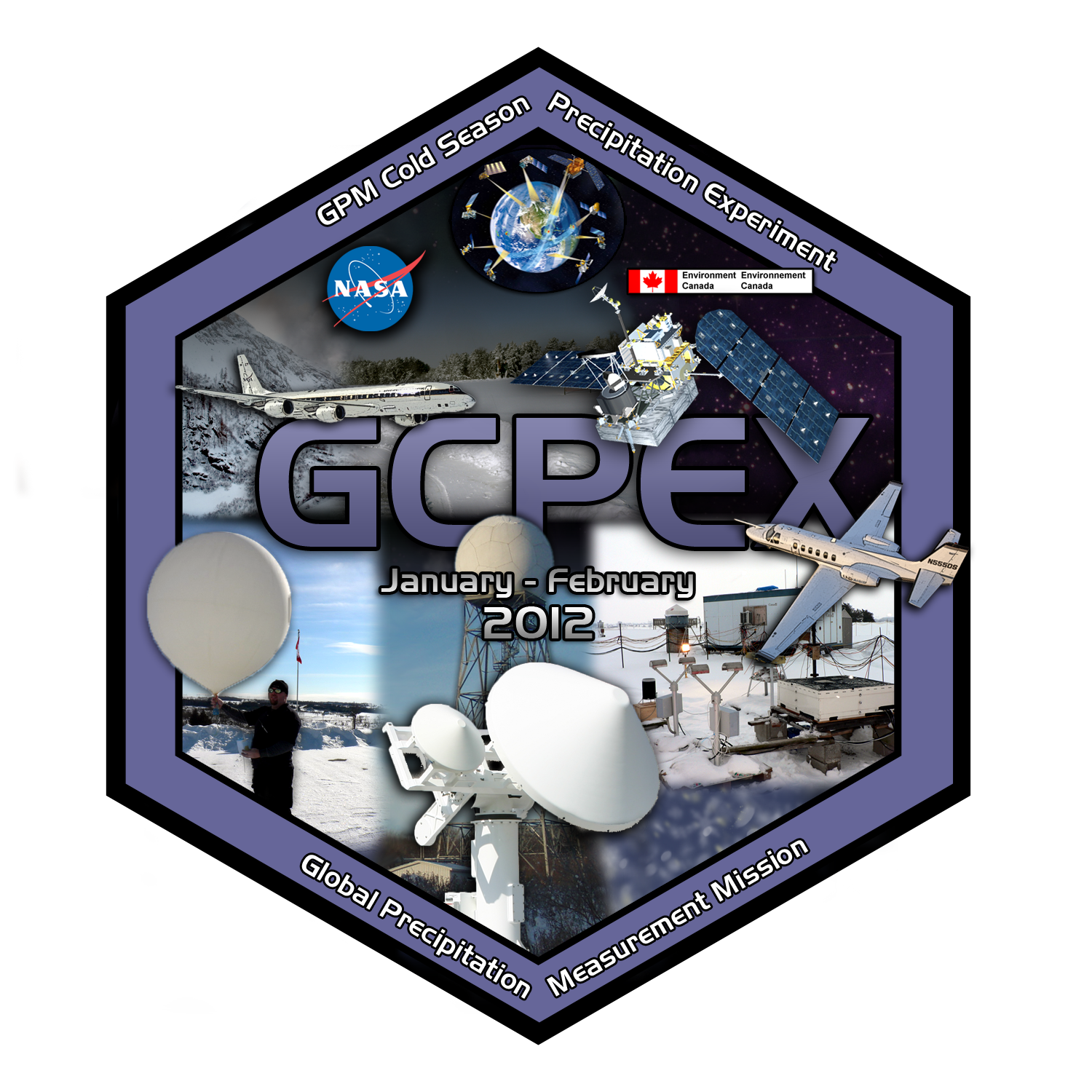
The GPM Cold-season Precipitation Experiment (GCPEx) occurred in Ontario, Canada during the winter season (Jan 15- Feb 26) of 2011-2012. GCPEx addressed shortcomings in GPM snowfall retrieval algorithm by collecting microphysical properties, associated remote sensing observations, and coordinated model simulations of precipitating snow. These data sets were collected toward achieving the overarching goal of GCPEx, which is to characterize the ability of multi-frequency active and passive microwave sensors to detect and estimate falling snow.
 The primary objectives of GCPEx included:
The primary objectives of GCPEx included:
- Conduct a complete study of snowfall physics from the ground through the atmospheric column under coverage of a high-altitude airborne GPM satellite simulator. This was achieved via use of dual-frequency radar (APR-2; Ka, Ku bands) and “frequency-targeted” radiometer (CoSMIR; 50-183 GHz) integrated on the NASA DC-8 aircraft.
- Provide coordinated in situ airborne and ground-based microphysical platforms to observe single snow crystal and bulk snowfall properties (habit, size distribution, density) that enable development of models converting microphysical properties of snow to observed GMI brightness temperature and DPR Ka-Ku band reflectivity.
- Provide multi-frequency/polarimetric radar vertically pointing and volumetric datasets suited to relating particle scale characteristics to bulk snowfall measurements over spatial scales consistent with satellite fields of view.
- Provide ground-staring multi-frequency radiometer measurements with coincident snowpack water content estimates toward evaluating the impacts of and potential corrections for ground emission on the snowfall retrieval algorithms.
- Provide tropospheric measurements of thermodynamic quantities such as temperature and water vapor for algorithm and satellite simulator model needs.
Collectively the GCPEx data set provides a high quality, physically-consistent and coherent data set suited to the development and testing of GPM snowfall retrieval algorithm physics. GCPEx datasets further our basic understanding of snowfall physical processes across multiple scales. Most importantly, the results elucidate how those processes may be optimally observed using spaceborne remote sensing instrumentation that includes the GPM Dual-frequency Precipitation Radar (DPR), the GPM passive microwave (PMW) imager (GMI) and other existing/planned active or passive microwave (PMW) sensors flying on ancillary platforms (e.g., CloudSat, AMSR-E, AMSU-B/MHS, SSMI/S etc.).
GCPEx objectives addressed the process of falling snow events and augmented the currently limited database of snow microphysical and radiative properties that form the critical assumptions at the root of satellite retrieval algorithms. GCPEx objectives addressed significant areas of weaknesses or knowledge gaps in GPM snowfall detection and estimation algorithms to include:
- Lack of realistic representation of snow particles, their bulk density, size and shape distributions, and their associated radiative properties in algorithm forward models;
- Limited physically-based means to assess the behavior and mitigation of surface emission impacts and emission dynamics on satellite PMW measurements over multiple temporal scales and surface types;
- A lack of representative databases for active+passive observations linked to a measurement reference;
- The low sensitivity to light/moderate falling snow events by passive sensors and sensitivity to tropospheric water vapor profiles;
- The ambiguity in Ze-S and TB-IWP relationships;
- Near surface clutter contamination for radar observations;
- Detection and influence of cloud water imbedded in snow profiles.
GCPEx DOI:
https://doi.org/10.5067/GPMGV/GCPEX/DATA101






